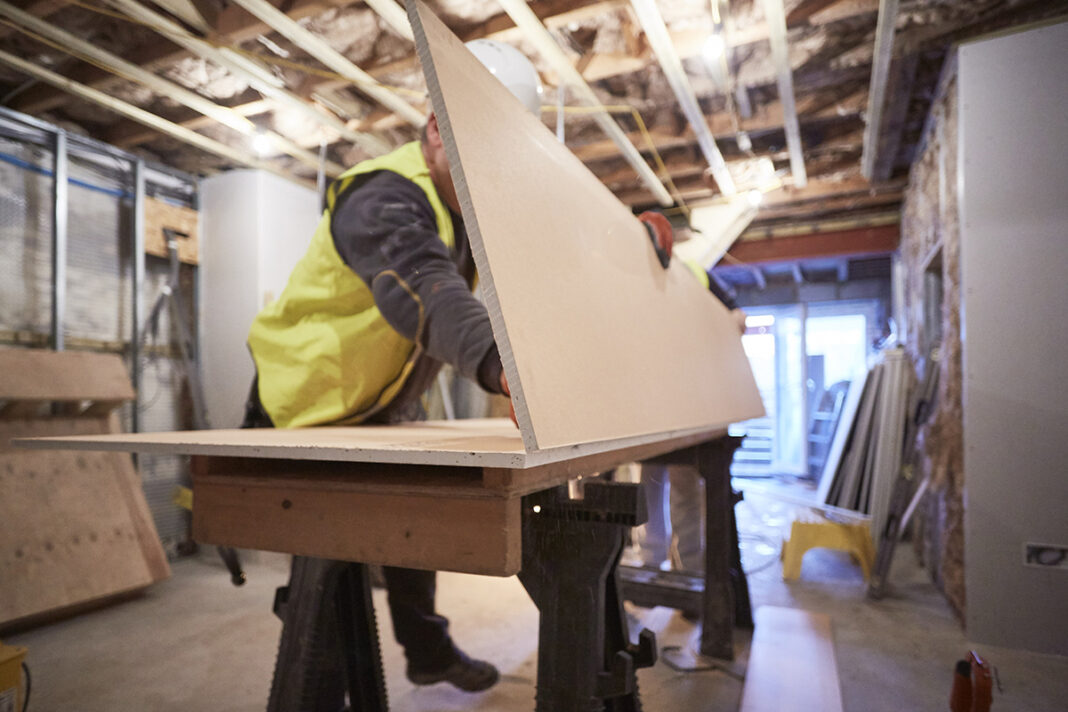
Joe Cilia, technical director at FIS, outlines his views on how to minimise the risk of obtaining musculoskeletal injuries when handling plasterboard
MUSCULOSKELETAL disorders (MSDs) cost construction employers £646 million a year and is one of the most common causes of sickness, absence, and productivity loss at work.
With MSDs a serious issue when moving and installing plasterboard amongst the plasterboard industry, what can everyone in the supply chain do to control the risk of musculoskeletal injury when their workforce handle plasterboard?
Overuse or repetitive motion injuries have become a frequent occurrence in the workplace and it is why ensuring good musculoskeletal health has become such an important issue for workers. When a worker is asked to do work that is outside their body’s capabilities and limitations, they are being asked to put their musculoskeletal system at risk. It might well be a one-off event and the body gradually heals, but repeated or awkward handling of heavy items can cause the greatest risk and lead to long-term problems.
Such is the extent of the problem in the UK that nearly seven million workdays are lost annually due to MSDs. In construction, the rate of MSDs is the highest of any profession, with back or shoulder pain one of the most common reasons for people to be off work or having to give up work early.
Whilst the construction industry continues to face unprecedented times due to the Covid pandemic, the sector must remain vigilant in tackling musculoskeletal problems across the workforce.
MSDs should never be seen as an inevitable part of some jobs. Most injuries are not accidents, they can be prevented through planning and better working practices.
It’s also vitally important for workers to keep physically fit and seek advice if they experience musculosketal problems.
Improvements in preventing and controlling exposure to MSDs and how health risks can be reduced is essential. Lifting, moving and handling large amounts of plasterboard should be kept to a minimum and if it is carried out, then as safely as possible.
The journey of plasterboard from factory to site involves many people, all of whom need to be able to work with a reduced risk of injury. The risk is predominantly due to the weight and unwieldy nature of the plasterboard. Any manual handling needs to be minimised by good planning and using equipment. There needs to be good training and implementation of those practices. Most importantly, everyone needs to have the right attitude and behaviour so that no one in the industry is exposed to short or long-term risks that will affect their musculoskeletal health and ability to do their everyday activities, now or in the future.
Good planning and communication between everyone involved throughout any construction project will be key to reducing the health risk. Principal contractors should be encouraged to engage with all parts of the supply chain before the logistics plan is developed. Any changes in plans need to consider the effects on the supply movement and installation of plasterboard. Furthermore, people need to know how to look after their own musculoskeletal health, but others must not expose them to avoidable risks.
A new FIS Best Practice Guide produced by members of the Plasterboard Material Handling Group aims to improve health and safety when plasterboard is delivered, moved and stored and how risks can be reduced. It covers material-handling arising from the journey that plasterboard takes when delivered to sites that include homes, commercial, high-rise multi-occupancy, new builds and refurbishments. The guide is broken down into stages from planning to engagement with manufacturers and distributors, delivery and offloading, storage, vertical and horizontal movement, storage of off-cuts and finally the removal and egress of waste.
The health and wellbeing of the construction workforce has never been more important and is why training, planning and good working practices will ensure that people can work in the industry until they wish to leave it with good health, and not have to leave the industry because of debilitating musculoskeletal problems.








